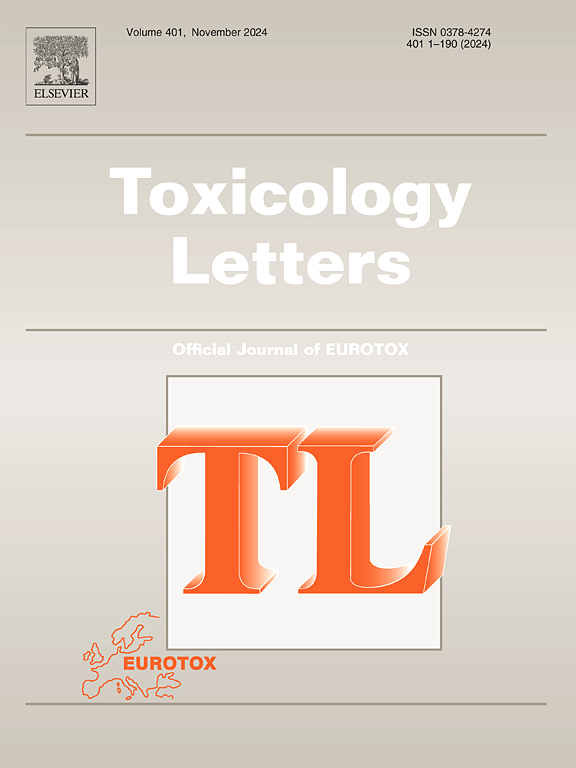氯化锂激活Wnt/β-catenin信号增加B淋巴瘤Moloney小鼠白血病病毒插入区1可减弱顺铂对HEI-OC1听觉细胞的毒性。
IF 2.9
3区 医学
Q2 TOXICOLOGY
引用次数: 0
摘要
顺铂广泛应用于抗肿瘤治疗,但大剂量顺铂引起的耳毒性往往限制了其疗效,顺铂致耳蜗损伤的具体机制尚不完善。Wnt/β-catenin信号通路与衰老、胚胎发育和细胞凋亡密切相关。同时,B淋巴瘤Moloney小鼠白血病病毒插入区1 (BMI1)在内耳的进化发育和内耳相关疾病的发生发展中起一定作用。本研究旨在探讨Wnt/β-catenin信号通路和BMI1在改善顺铂耳毒性中的作用及具体机制。采用CCK-8细胞增殖试验和Western Blot检测各药物的凋亡情况。采用慢病毒转染HEI-OC1耳蜗毛细胞,过表达BMI1。Western Blot、qPCR和免疫荧光检测各模型BMI1和Wnt/β-catenin信号通路各组分的激活情况。Wnt/β-catenin信号通路与BMI1共同参与顺铂诱导的细胞损伤。低氯化锂(LiCl)浓度激活Wnt/β-catenin通路,增加BMI1表达,减轻顺铂诱导的毛细胞损伤。相比之下,BMI1的过表达抑制了Wnt/β-catenin通路,减轻了毛细胞损伤。同时,抑制BMI1对顺铂诱导的毛细胞损伤的增加不能被LiCl所挽救。综上所述,LiCl可通过激活Wnt/β-catenin通路,提高BMI1的表达,从而改善顺铂耳毒性。BMI1过表达抑制Wnt/β-catenin通路,减轻顺铂诱导的毛细胞损伤。本文章由计算机程序翻译,如有差异,请以英文原文为准。
Activation of Wnt/β-catenin signaling to increase B lymphoma Moloney murine leukemia virus insertion region 1 by lithium chloride attenuates the toxicity of cisplatin in the HEI-OC1 auditory cells
Cisplatin is widely used in anti-tumor therapy, but the ototoxicity caused by high-dose cisplatin often limits its efficacy, and the specific mechanism of cisplatin-induced cochlear damage is still not perfect. The Wnt/β-catenin signaling pathway is closely related to aging, embryonic development, and apoptosis. Meanwhile, B lymphoma Moloney murine leukemia virus insertion region 1 (BMI1) plays a certain role in the evolution and development of the inner ear and the occurrence and development of inner ear-related diseases. Our study intends to explore the role and specific mechanism of the Wnt/β-catenin signaling pathway and BMI1 in improving cisplatin ototoxicity. The appropriate experimental concentrations for each drug were selected by CCK-8 cell proliferation assay and Western Blot to detect apoptosis. The lentivirus transfection of HEI-OC1 cochlear hair cells was used to overexpress BMI1. Western Blot, qPCR, and immunofluorescence detected the activation of each component of BMI1 and Wnt/β-catenin signaling pathway in each experimental model. Wnt/β-catenin signaling pathway and BMI1 are jointly involved in cisplatin-induced cell injury. Low lithium chloride (LiCl) concentrations activated the Wnt/β-catenin pathway, increased BMI1 expression, and reduced cisplatin-induced hair cell injury. In contrast, overexpression of BMI1 inhibited the Wnt/β-catenin pathway and reduced hair cell injury. Meanwhile, the increased cisplatin-induced damage to hair cells by inhibiting BMI1 could not be rescued by LiCl. In conclusion, LiCl can ameliorate cisplatin ototoxicity by elevating BMI1 expression through activation of the Wnt/β-catenin pathway. Overexpression of BMI1 inhibits the Wnt/β-catenin pathway and reduces cisplatin-induced hair cell damage.
求助全文
通过发布文献求助,成功后即可免费获取论文全文。
去求助
来源期刊

Toxicology letters
医学-毒理学
CiteScore
7.10
自引率
2.90%
发文量
897
审稿时长
33 days
期刊介绍:
An international journal for the rapid publication of novel reports on a range of aspects of toxicology, especially mechanisms of toxicity.
 求助内容:
求助内容: 应助结果提醒方式:
应助结果提醒方式:


